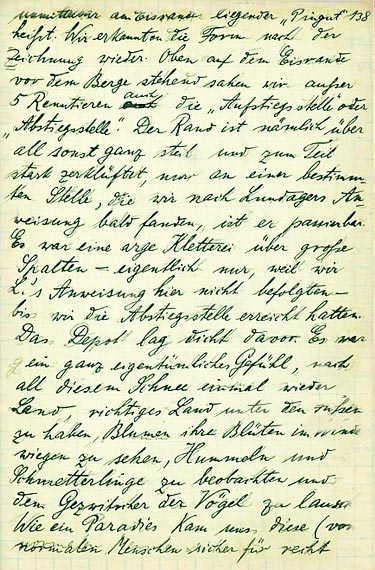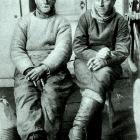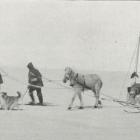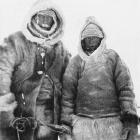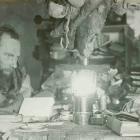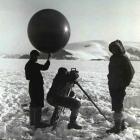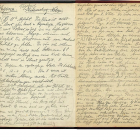NL 001-010_138
Source: Alfred Wegener, Tagebücher, June 1912 – July 1913. DMA NL 001/010.
[138] unmittelbar am Eisrande liegen, der „Pingut“ heißt. Wir erkannten die Form nach der Zeichnung wieder. Oben auf dem Eisrande vor dem Berge stehend sahen wir außer 5 Renntieren auch die „Aufstiegsstelle“ oder „Abstiegsstelle“. Der Rand ist nämlich überall sonst ganz steil und zum Teil stark zerklüftet, nur an einer bestimmten Stelle, die wir nach Lundagers Anweisung bald fanden, ist er passierbar. Es war eine arge Kletterei über große Spalten – eigentlich nur, weil wir L’s Anweisung hier nicht befolgten - bis wir die Abstiegsstelle erreicht hatten. Das Depot lag dicht davor. Es war ein ganz eigentümliches Gefühl, nach all diesem Schnee einmal wieder Land, richtiges Land unter den Füßen zu haben, Blumen ihre Blüten im Winde wiegen zu sehen, Hummeln und Schmetterlinge zu beobachten und dem Gezwitscher der Vögel zu lauschen. Wie ein Paradies kam uns diese (von normalen Menschen sicher für recht
[138] called Pingut sits directly on the ice ridge. We recognized the shape in the drawing. On the ice ridge in front of the mountains, we saw five reindeer as well as the “point of ascent” or “point of descent.” Everywhere else, the ridge is very steep and extremely rugged, and only at a certain spot, which we quickly found with the help of Lundager’s directions, is it passable. Climbing across the large fissures was a horrible business—only because we didn’t follow L’s instructions until we reached the point of descent. The depot was close in front of it. After all that snow, it was a very peculiar feeling to have land, real land, under my feet, and to see flowers blowing in the wind, bumblebees and butterflies, and to hear the birds singing. To us, this moraine landscape on the ice ridge (which most people would probably consider rather
